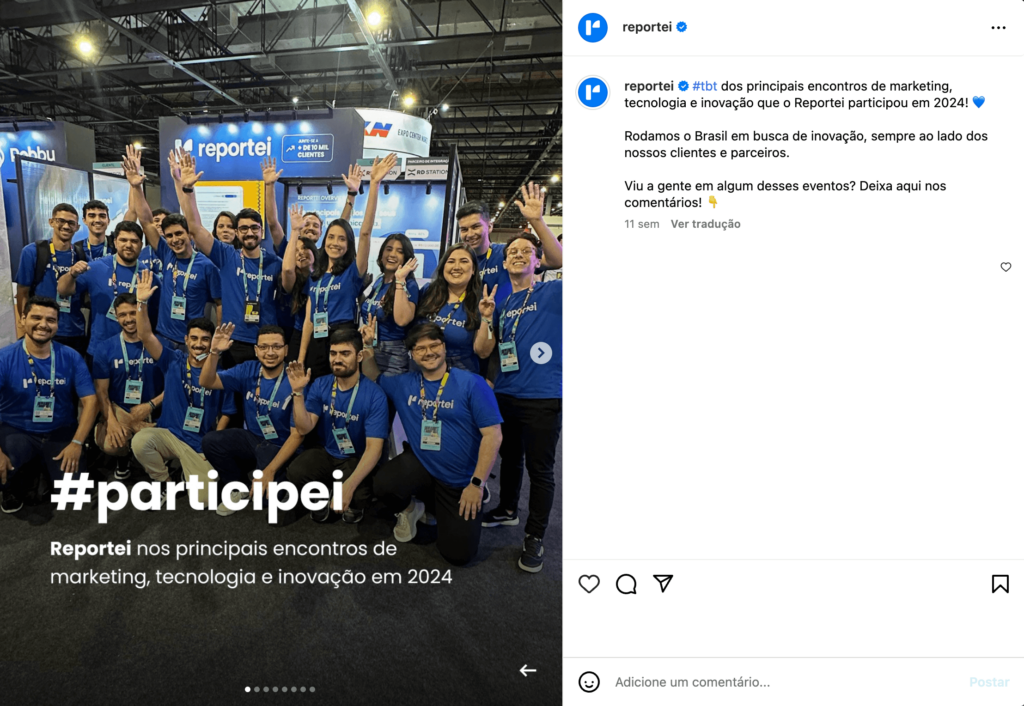In doubt whether it’s worth betting on the famous story to feed? Then check out our complete guide on how to turn temporary content into permanent on your profile.
Certainly, one of the most intelligent strategies to optimize your content on Instagram is the famous story to feed which simply involves turning temporary posts into something permanent and long-term on your profile.
In other words, this approach allows you to leverage the visibility of stories and amplify your impact by creating posts that continue to generate results even after 24 hours.
In this article, you’ll see why this practice can benefit your social networks and how to implement it efficiently. Follow along.
What are stories and feed? Understand the difference.
But first of all, it’s essential to understand the difference between the two functionalities that are among the most popular on social networks, especially on Instagram and Facebook.
After all, both formats aim to engage the audience, but with quite distinct objectives.
To begin with, the stories are temporary posts that remain visible for only 24 hours.
They allow for more direct and informal interaction with followers, usually using short videos, photos, polls, questions, and other interactive features.
Thus, the appeal of the story lies in spontaneity, creativity, and urgency that it offers.
That is, people know the content disappears quickly, which encourages constant viewing and more relaxed communication.
On the other hand, posts on the feed are permanent or almost and remain visible to the audience until the user deletes them.
These posts can be photos, videos, or carousels and tend to be more elaborate, designed to represent the brand or individual’s identity in the long term.
Thus, unlike stories, content on the feed is more durable and accessible which generates more exposure time and a greater possibility of engagement.
But the difference between these two types of posts is not just in the duration but also in the type of content each accommodates.
While the story is more relaxed and transient, the feed requires more careful planning and timeless.
And it’s precisely this difference that makes the story to feed concept so interesting.
Why turn stories into permanent content
The story to feed concept has gained strength among content creators, companies, and brands that want to leverage the instant engagement of stories and convert it into something that remains on the profile.
But why has this strategy become increasingly popular? Below, we list the main reasons.
Extended reach
By transforming stories into permanent posts on the feed, the content remains available to new followers and profile visitors.
This means that content that performed well in stories can continue to generate engagement for days, weeks, or even months.
Content reuse
Moreover, creating content is a time-consuming and even costly process.
Thus, with story to feed, you can repurpose the material produced in stories into an adapted version which helps to increase the return on investment (ROI) of your production.
Brand strengthening
Finally, turning quick and informal content from stories into feed posts helps to strengthen your online presence.
After all, this constant and diversified content on your profile contributes to a more solid and consistent brand image without losing the direct interaction that stories provide.
Strategies to transform story content to feed
Now that we understand the value of turning stories into permanent content, let’s explore strategies that can be used to make this transition more efficient. Check it out.
1. Choose content formats that work best from story to feed
Not all story content is suitable to be transformed into a permanent feed post. But there are some formats that work better in this transition process, such as:
Polls and questions
If you conducted a poll or asked something in the story and received a good response, turn that into a feed post.
You can share the survey results with graphs or more detailed information and take the opportunity to continue the interaction in the comments.
Behind the scenes and spontaneous moments
Additionally, if you shared a relaxed moment or an interesting behind-the-scenes in the stories, you can adapt this content for the feed, turning it into something more elaborate with a good caption that contextualizes and engages the audience.
An interesting example is the post below from Reportei, which took a series of event photos featuring our team from story to feed.

Testimonials and feedbacks
When you receive positive feedback from a follower or client, turning it into a feed post is a great way to share real stories and build trust with your audience.
Educational or informational content
Finally, if you shared something educational in stories, like quick tips or explanations, consider turning it into a more detailed feed post, including complementary images or videos.
2. Maximize engagement when reposting stories to feed
When turning stories into permanent feed content, it’s essential to optimize engagement.
Therefore, here are some tips to ensure your post performs well:
- Craft a good caption while stories are usually shorter and more direct, the feed allows for a more elaborate caption. Use this opportunity to contextualize the transformed content, add extra information, and ask questions that encourage interaction.
- Use calls to action (CTAs) stimulate engagement with a good CTA. In other words, ask followers to comment, like, or share the post, as this helps to increase the content’s reach.
- Choose the right moment don’t post immediately after the story but choose a strategic time to ensure your audience is online and generates engagement. After all, this maximizes the chances of the post reaching more people.
3. Be careful when adapting story to feed
Although turning stories into feed is a great strategy, there are some actions you should avoid to ensure the transition is successful. Here’s what they are:
- Don’t overdo repetition if you share too much story content on the feed, your profile may seem disorganized and monotonous. Therefore, it’s important to balance recycled content with new posts and maintain the feed’s identity.
- Be careful with the format stories are usually vertical, while the feed tends to be square or rectangular. So, make sure to resize the content adequately to ensure it looks visually appealing.
- Authenticity even when adapting story to feed content, it’s important to maintain authenticity. In other words, don’t try to force an adaptation that doesn’t match your brand’s tone or your feed’s style.
4. Use tools that help in this process
To facilitate the process of transforming stories into permanent content, you can also rely on some tools that assist in adjusting and editing the content.
Some of the main ones available on the market are:
- Canva offers templates specific to social networks and allows you to resize images and videos, adjusting them to the feed’s format.
- Adobe Express allows you to create graphics and videos quickly and in a personalized manner, making it ideal for adapting story content to feed.
- Instagram Highlights besides turning stories into posts, you can save them as Highlights on your profile, creating a form of permanent content but in a dedicated section.
Having said all that, we can see that the story to feed strategy is an intelligent way to maximize content on social networks, repurpose the ephemeral material of stories, and extend its reach and impact.
Thus, by following the tips and strategies presented in this article, you can turn fleeting content into something valuable and lasting, strengthen your brand’s presence on social networks, and engage your audience effectively.



